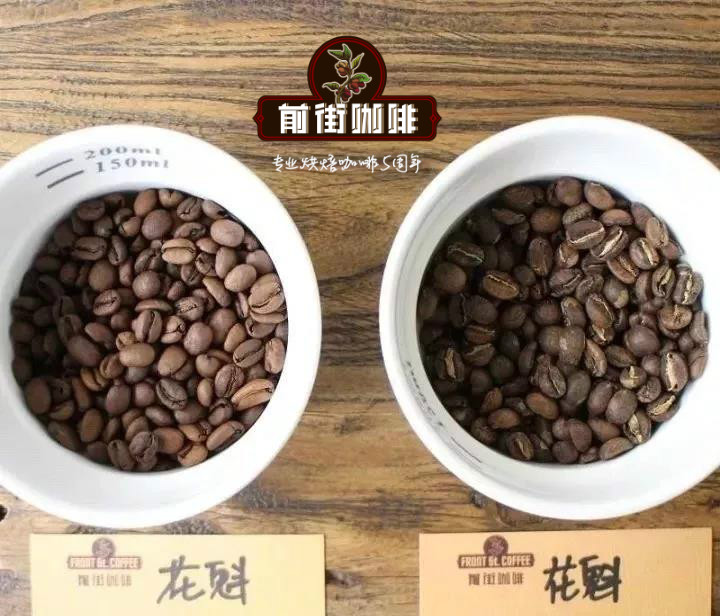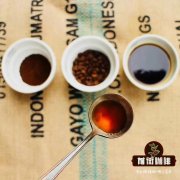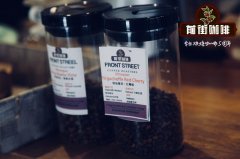Flavor and taste characteristics of adzuki bean from local farmer PB of Jinluojin treatment plant in Kenya

Professional coffee knowledge exchange more coffee bean information please follow the coffee workshop (Wechat official account cafe_style)
Kericho songony
SL34 single Variety from Jinluojin treatment Plant, Sanggang Leaf Cooperative, AB TOP, Kenya
Songonyet Co-operative of Sanggang Leaf, AB Kericho producing area in Kenya, single variety SL34, washing
Treatment plant: Jinluojin treatment plant
Brown sugar, raspberries.. It's very sweet and tastes good.
This time, the Sanggang Leaf Cooperative comes from the coffee kericho producing area of Kenya, which has a strong berry aroma at the entrance, clean and strong taste and a sweet finish like fruit tea, which is also the unique flavor of 'SL34''.
SL34 is a variety developed by Scott Lab (now NARL, Kenya's National Agricultural Research Laboratory). They are committed to variety improvement, developed a series of tree species, and named after number, among which SL28 and SL34 have won the reputation of "Cup of connoisseurs" because of their outstanding aroma and unique flavor; SL-34 is one of the local varieties promoted and planted in Kenya because of its good adaptability to the changeable weather in the highlands, high yield and good quality.
Kenya AB Water washing Mulberry Gangye Cooperative Jinluojin treatment Plant single variety SL34 | $450 / half pound $120 / cup
Kenya Kericho Songonyet SL34 AB Top (W)
Production area | Kericho
Variety | SL34
Flavor | berries, raspberries, plums, apples, black tea
The Kenyan coffee industry is known for its collaborative system of production, processing, milling, marketing and auction systems. About 70% of Kenyan coffee is produced by small-scale holders. It is estimated that in 2012, there were about 150000 coffee farmers in Kenyaand. Other estimates are that 6 million Kenyans are directly or indirectly employed in the coffee industry. Kenya's main coffee-producing areas are the high plateau around the Kenyan mountains, the Aberdeen range, Kisi, Nyansa, Pengoma, Nakuru, Karijo and the smaller hills of Machakos and Taita in the eastern and coastal provinces.
Although it may be widely known as the type of Kenyan coffee, Kenya AA is actually a classification of coffee grown in Kenya. All Kenyan coffee is graded after grinding. Assign a rating according to the screen size of the bean. Bean with a screen size of 17 or 18 (17 or 18) is assigned an AA level, usually the largest bean. Although the size of soybeans is considered by many to be a sign of quality, it is important to note that it is only one of many factors that determine high-quality coffee.
Kenyan coffee is traded once a week on the Nairobi Coffee Exchange. It is built on the wakulima house and the exchange lanes are closed on Haier Selassie Avenue.
The coffee is packed in a 60-kilogram sack, but every 50-kilogram bag is made this way.
The following is a sample of the average price of coffee at Jinluojin processing plant (per 50kg bag) at auction.
In the acidic soil of the highlands of central Kenya, only a moderate amount of sunlight and rainfall provide good conditions for growing coffee plants. Coffee from Kenya is a "Colombian mild" type, famous for its rich flavor, full body and pleasant aroma. Cocoa and high-grade coffee from Kenya is one of the most popular coffees in the world.
Important Notice :
前街咖啡 FrontStreet Coffee has moved to new addredd:
FrontStreet Coffee Address: 315,Donghua East Road,GuangZhou
Tel:020 38364473
- Prev

How to make a good cup of coffee
Professional coffee knowledge exchange More coffee bean information Please pay attention to coffee workshop (Weixin Official Accounts cafe_style) What kind of coffee is good, the secret of achieving a good cup of coffee, from coffee bean planting, roasting, grinding to brewing, each step has its special know-how, all need to be carefully taken care of and refined blending, coffee road professionals must have in-depth research. taste
- Next

Why is Kopi Luwak so expensive? is Kopi Luwak delicious? is it really made of shit?
For more information on coffee beans, please follow the coffee workshop (Wechat official account cafe_style) Kopi Luwak (Kopi Luwak), also known as civet coffee (English: civet coffee, Indonesian: Kopi Luwak, Filipino: Kape Motit, Kape Alamid, Kape Mel?, Kape Musang). In Indonesian, Kopi means coffee.
Related
- Detailed explanation of Jadeite planting Land in Panamanian Jadeite Manor introduction to the grading system of Jadeite competitive bidding, Red bid, Green bid and Rose Summer
- Story of Coffee planting in Brenka region of Costa Rica Stonehenge Manor anaerobic heavy honey treatment of flavor mouth
- What's on the barrel of Blue Mountain Coffee beans?
- Can American coffee also pull flowers? How to use hot American style to pull out a good-looking pattern?
- Can you make a cold extract with coffee beans? What is the right proportion for cold-extracted coffee formula?
- Indonesian PWN Gold Mandrine Coffee Origin Features Flavor How to Chong? Mandolin coffee is American.
- A brief introduction to the flavor characteristics of Brazilian yellow bourbon coffee beans
- What is the effect of different water quality on the flavor of cold-extracted coffee? What kind of water is best for brewing coffee?
- Why do you think of Rose Summer whenever you mention Panamanian coffee?
- Introduction to the characteristics of authentic blue mountain coffee bean producing areas? What is the CIB Coffee Authority in Jamaica?

